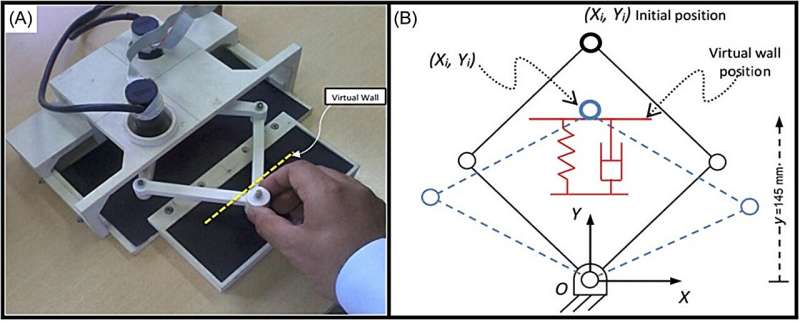
Haptic feedback stands as a cornerstone for the authenticity and depth of engagement in virtual reality and teleoperation systems. Yet, existing haptic devices have grappled with the fidelity of replicating tactile properties, hindered by the constraints on their degrees of freedom and expressive range. This limitation has ignited an urgent quest for innovative solutions that can augment the responsiveness and adaptability of haptic systems.
In a collaborative endeavor, the Islamic University of Science and Technology and the National Institute of Technology Srinagar have unveiled a transformative development in the field of haptics. Their research, featured in the International Journal of Mechanical System Dynamics on June 5, 2024, presents a dual-rate sampling approach for multi-degree-of-freedom (multi-DOF) haptic interfaces, signifying a notable leap forward in enhancing haptic performance.
The study's core innovation lies in the application of a dual-rate sampling scheme, which is meticulously implemented on a field programmable gate array (FPGA). This strategy, by decoupling the stiffness and damping components of the virtual environment into parallel feedback loops and rendering them at two distinct sampling rates, effectively broadens the Z-width—the spectrum of virtual impedances that can be stably rendered.
The FPGA-based implementation, which involves sophisticated digital logic for velocity estimation and collision detection, is particularly challenging but has been successfully achieved. This advancement not only promises more stable interactions in virtual environments but also paves the way for the development of haptic interfaces that can render a wider range of virtual impedances, crucial for applications in medical training, telesurgery, and advanced simulation environments.
Dr. Majid Koul, the principal investigator, says, "Our dual-rate sampling scheme shatters the traditional limitations of haptic interfaces, offering a wider dynamic range of virtual impedances while maintaining stability at higher sampling rates. This innovation is set to redefine the quality of user interactions in virtual and remote environments."
The implications of this research are profound, promising to reshape the landscape of industries where haptic technology plays a critical role. From providing medical professionals with simulations that closely mimic the tactile properties of real tissues to enabling teleoperators to perform delicate remote tasks with unprecedented precision, this dual-rate sampling scheme is primed to deliver enhanced realism and reliability.
Its integration into virtual reality and engineering design is anticipated to usher in a new wave of interactive experiences and sophisticated 3D model manipulation, propelling digital applications into a future where haptic engagement is seamless and sophisticated.
More information: Majid Koul et al, Elevating haptic interfaces: Dual‐rate sampling and field programmable gate array implementation for multi‐degree‐of‐freedom performance enhancement, International Journal of Mechanical System Dynamics (2024). DOI: 10.1002/msd2.12115
Provided by University of Science and Technology
Citation: The feel of the future: Elevating haptics with advanced dual-rate sampling (2024, July 31) retrieved 31 July 2024 from https://techxplore.com/news/2024-07-future-elevating-haptics-advanced-dual.html
This document is subject to copyright. Apart from any fair dealing for the purpose of private study or research, no part may be reproduced without the written permission. The content is provided for information purposes only.
